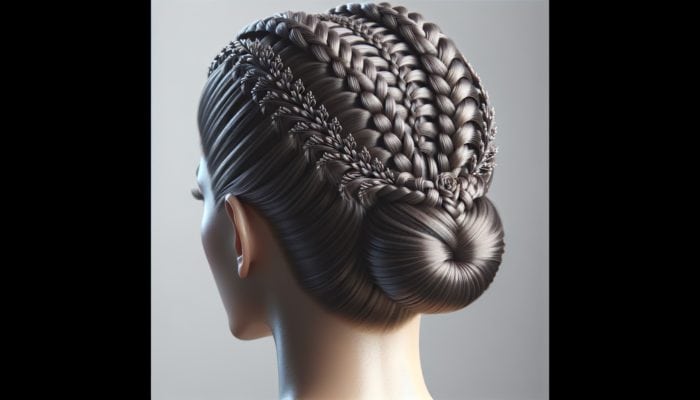To master the essential principles of shoe care, it is vital to recognize the appropriate timing for postponing the conditioning of your footwear. Newly purchased shoes typically come with factory-applied conditioning agents that offer excellent protection right from the outset. While the urge to condition them immediately may be strong, doing so can significantly harm the leather's finish, particularly in lighter colors. Fresh leather features closed pores, making it especially vulnerable to various products, which increases its risk of staining and color alterations. It is advisable to wait until your shoes exhibit clear signs of dryness after several months of wear before contemplating any conditioning treatments.
Understanding the Unique Properties of Fresh Leather
The leather used in your brand-new shoes possesses distinct characteristics that set it apart from previously worn pairs. Fresh leather arrives with sealed pores and a protective factory finish, establishing a barrier against environmental elements. This specific condition makes new leather more sensitive to external substances, thereby increasing its vulnerability to damage from excessive treatments. During this initial phase, the leather's primary requirement is a natural break-in period rather than additional conditioning products. Allowing your shoes to conform to the shape of your feet is crucial for maintaining their quality and performance over time, ensuring they remain comfortable and functional for years to come.
The Importance of Factory Treatments for New Footwear
The production process involves applying essential protective treatments and conditioning to your brand-new shoes. Manufacturers strategically choose specific oils and treatments during production to provide both flexibility and durability to the leather. Consequently, your new shoes are already equipped with the necessary components for optimal performance during their early weeks of use. Applying additional conditioning at this juncture is not only unnecessary but could also inadvertently damage the leather, negating the benefits of the factory treatments.
The Significance of the Break-in Period for New Shoes
The critical first 10-15 wears of your new shoes are when they experience substantial natural changes. Throughout this essential phase, the leather begins to mold to your foot shape as the pores gradually open. This period is crucial for effective leather development, significantly minimizing the risk of staining caused by moisture or other substances. As you continue to wear your shoes, you'll experience enhanced comfort as the leather adapts to the contours of your feet, providing a more personalized fit. This natural adaptation prepares the leather for any future conditioning and care; rushing into premature treatments can lead to irreversible damage, particularly to lighter-colored shoes.
Avoiding Common Mistakes in Shoe Maintenance
A common misstep in shoe care involves rushing to condition new footwear. Many individuals apply products too soon, mistakenly believing they are safeguarding their investment. Your new shoes already come equipped with factory-applied protective elements, and immediate conditioning can compromise these critical treatments. By introducing unnecessary products too early, you risk damaging the leather's natural properties and overall appearance, potentially leading to costly mistakes in the long run.
The Dangers of Premature Conditioning
Upon acquiring your shoes, it is essential to give the leather time to break in naturally. New shoes have closed pores that amplify their reactivity to conditioning products. If you apply conditioner too soon, you might inadvertently cause lasting staining or unwanted color changes, especially in lighter shades. It is advisable to wait for a minimum of 5-7 wears before introducing any additional treatments, allowing the leather to acclimatize properly and ensuring its longevity.
The Consequences of Over-Treatment on New Leather
Excessive conditioning on new leather can lead to a multitude of complications. You might observe unwanted darkening in tan or light-colored shoes due to oversaturation. This over-conditioning can shorten the leather's lifespan and even compromise its finish. Treatments that utilize surface-based dyes are especially vulnerable to the adverse effects of over-conditioning. If you rush this process, you risk causing permanent damage that may require professional restoration, which is often both costly and time-consuming.
Often, the repercussions of over-conditioning manifest as irreversible damage to your footwear. Most conditioning mistakes cannot be rectified at home, leading you to seek professional restoration services as your only option for remedying the situation. Conditioning products are highly concentrated; thus, even a small amount can significantly alter the leather's appearance. The best course of action is to practice patience and wait until your shoes exhibit clear signs of dryness before applying any conditioning products.
Recognizing Leather Sensitivity in New Shoes
It is crucial to understand that certain leather types exhibit high sensitivity to treatments when they are new. Your new shoes come with a factory-applied finish that provides ample protection during the initial wear period. Introducing conditioners prematurely can disturb this original protective layer, resulting in unintended alterations to the leather’s surface. It's important to recognize that various leather types react differently to conditioning products, especially lighter and crust leathers that are especially prone to damage.
Behavior of Fresh Leather During Initial Use
With new shoes, the leather pores remain closed, heightening the risk of adverse reactions to surface treatments. During this early stage, your shoes are particularly vulnerable to staining from rain and other liquids compared to previously worn pairs. The tightly packed pore structure can also explain why shine applications may crack after initial wear. Recognizing this behavior is crucial for effective shoe maintenance, ensuring the longevity and appearance of your footwear.
The Evolution of Pore Structure Over Time
As you wear your shoes, the behavior of the leather pores gradually changes. With consistent use, the pores begin to open, making the leather more receptive to conditioning and polishing. This natural progression enhances your shoes' resistance to water spots and staining over time. Furthermore, changes in pore structure influence how your shoes interact with care products. Initially, the closed pores create a barrier that can trap products on the surface, potentially leading to darkening or damage to the finish. After an adequate break-in period, the open pores allow products to penetrate more effectively into the leather, promoting its health and longevity.
The Risks of Improper Conditioning Techniques
To safeguard your new shoes, it is essential to understand that incorrect conditioning can lead to irreversible damage. Fresh leather shoes come equipped with factory-applied finishes and treatments that offer sufficient protection. Prematurely applying conditioner can undermine these protective layers, potentially resulting in issues that frequently require professional intervention for resolution.
The Adverse Effects of Color Changes
Research indicates that 60-80% of premature conditioning instances lead to unwanted color changes, particularly in light-colored footwear. The closed pores of new leather make it extremely sensitive to conditioning products, resulting in uneven absorption and dark spots that can be challenging, if not impossible, to rectify through standard cleaning methods. This risk is particularly pronounced with tan and natural leather finishes, highlighting the necessity of exercising caution when applying any products.
The Risk of Finish Stripping in New Footwear
When you first apply conditioner, your new shoes may face the possibility of finish stripping. The concentrated nature of conditioning products can break down the factory finish, leading to exposed patches of raw leather underneath. This type of damage is especially prevalent in shoes that utilize surface-based dyes and museum calf finishes. Furthermore, attempting to repair stripped areas with additional product applications can exacerbate the situation, leading to more severe deterioration. Professional restoration services often charge between $100-$200 to address stripped finishes, and some damage may remain permanent. The most effective prevention strategy is to wait until your shoes exhibit clear signs of dryness before applying any conditioner.
Essential Guidelines for Effective Shoe Maintenance
It is critical to handle your new shoes with care. Factory-fresh leather is optimally conditioned from the manufacturing process, and your primary focus should be on routine cleaning and protecting the surface from scratches. A gentle brushing after each wear, combined with the use of shoe trees, will help preserve the leather’s natural qualities and appearance. Avoid heavy products on your new shoes for at least the first month of use to ensure their durability and longevity.
Timing Your Conditioning Appropriately
Ultimately, it is crucial to wait until you notice clear indicators that your shoes require conditioning. Wait at least 15-20 wears before applying any conditioner, looking for visible signs such as dryness, creasing, or a dull appearance. Your shoes will communicate their maintenance needs—the leather may feel stiff and look less vibrant. Conducting a test on the inside heel area initially can help prevent damage to more visible surfaces, allowing you to gauge the leather's response to conditioning.
Proven Techniques for Shining Your Shoes
Guidelines for shining new shoes are straightforward: limit mirror shining to toe caps and heel edges only. Select colored wax polish that matches your shoe’s color, and avoid using neutral polish, as it could strip the finish. Apply thin layers with a soft cloth, allowing each layer to dry completely before adding more. Conditioning should only occur after the appropriate break-in period has elapsed. Focus on gentle brushing techniques using horsehair brushes. Use products sparingly—it’s easier to add more than to remove excess. With light-colored shoes, extra caution is imperative, as they are more susceptible to staining and darkening. A patient approach will yield shoes that not only look exquisite but also stand the test of time.
Selecting the Right Leather Care Products
Considering the vast range of leather care products available, your new shoes require minimal treatment. Factory-fresh leather typically retains a moisture content of 12-15%, which is ideal for new footwear. Your product selection should align with this natural moisture balance, avoiding unnecessary conditioning that could jeopardize the factory finish.
Essential Care Products for New Shoe Maintenance
Your new shoes need only the most basic care items. A horsehair brush for routine cleaning and a high-quality cream polish that matches your shoe color will suffice for the first 10-15 wears. These fundamental items are designed to maintain the leather's appearance without compromising its factory-applied finish, ensuring the longevity and durability of your shoes.
Leather Care Products to Avoid at All Costs
Many ruined shoes can be traced back to the use of harsh conditioning treatments. Steer clear of heavy conditioners, neutral wax polishes, and penetrating oils on your new footwear. Such products can cause permanent staining or stripping of the original finish, particularly on light-colored or crust leather shoes. It is essential to understand that fresh leather is 40% more reactive to conditioning products than broken-in leather. The tightly closed pores of your new shoes make them particularly vulnerable to surface damage from excessive product use. It’s advisable to wait until you’ve worn your shoes at least 15-20 times before considering any conditioning treatments.
Best Practices for Conditioning New Leather Shoes
Determining when to condition your new shoes should depend on the leather's current state. If your shoes arrive with well-treated leather from the factory, conditioning can often be skipped altogether. Only proceed with conditioning if the leather appears visibly dry or feels stiff. When it's time to condition, start by applying a small amount to the inside heel first to gauge the leather’s response. If you notice any color changes or signs of finish stripping, cease the application immediately. Following these guidelines will help protect your investment and extend the lifespan of your cherished footwear.
Your Shoe Care Questions Addressed
Why is it discouraged to condition brand new leather shoes?
New leather shoes typically come with factory-applied conditioning treatments. Adding conditioner too early can harm the fresh leather, especially in lighter shades. The new leather possesses closed pores and is more reactive to liquids, rendering it more susceptible to stains or finish stripping. It’s prudent to allow the shoes to break in naturally through regular wear before introducing any conditioning products.
When should I initiate conditioning my leather shoes?
Start conditioning your shoes after several months of regular use, specifically when the leather exhibits signs of dryness. At this stage, the pores in the leather will have opened through wear, rendering it more responsive to conditioning products. Look for indications such as the leather feeling stiff or appearing dull—these are clear signs that it’s time to apply conditioner.
How can I determine if my new shoes need conditioning?
Most new shoes do not require immediate conditioning. However, if you suspect your new shoes might have dry leather, test a small amount of conditioner on the inside heel area first. If the leather darkens or exhibits signs of finish stripping, stop immediately. If the test area absorbs the conditioner without any discoloration, proceed with light conditioning, using minimal product for the best results.
The Article Why you shouldn’t condition new shoes and when it’s necessary appeared first on My Shoes Finder
The Article Conditioning New Shoes: When It’s Necessary and Why Not Was Found On https://limitsofstrategy.com
The Article Conditioning New Shoes: When It’s Essential and Why to Avoid It First Appeared ON
: https://ad4sc.com















Willa Yildirim
This is such a relevant topic, especially with how many options for shoe care products are out there now. I used to be one of those people who would rush to condition a new pair right after buying them, thinking I was giving them the care they deserved. It was a hard lesson to learn when I noticed the finish started to wear off and the color didn’t look quite right.